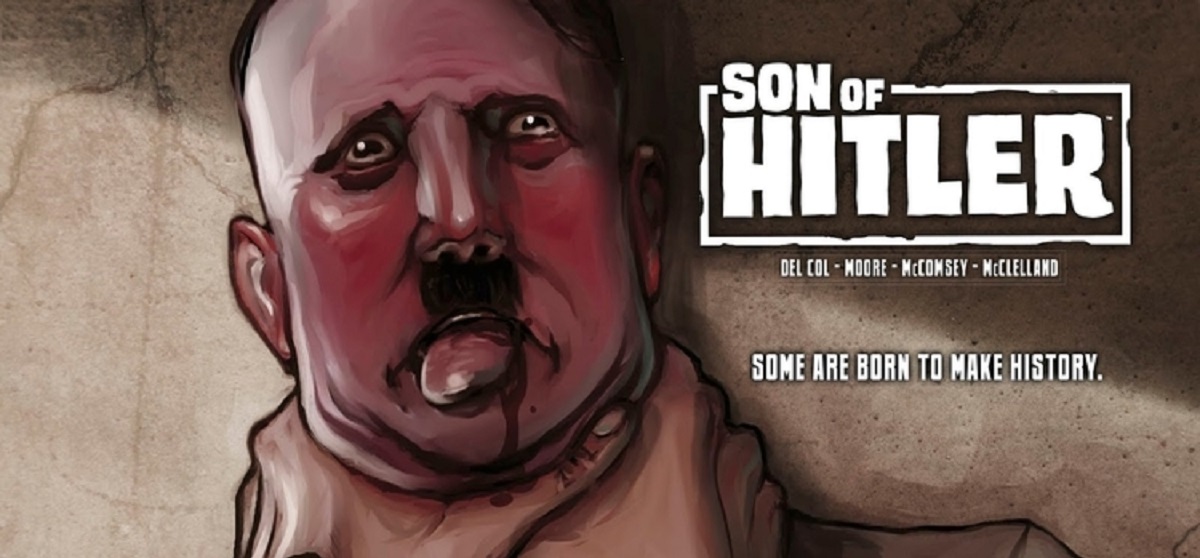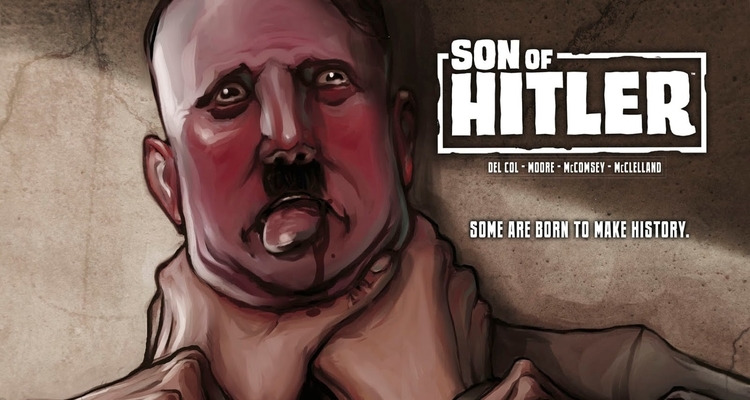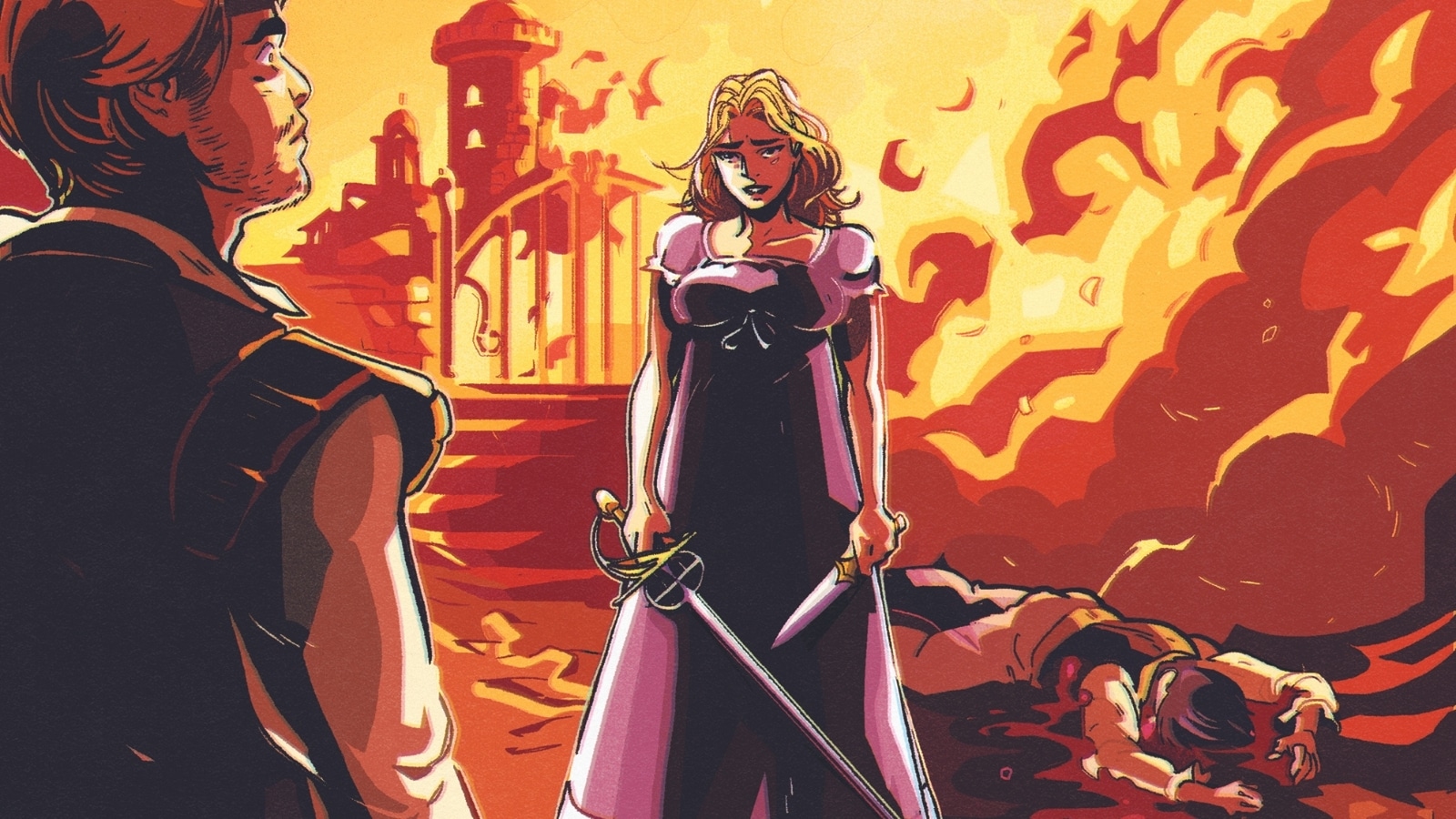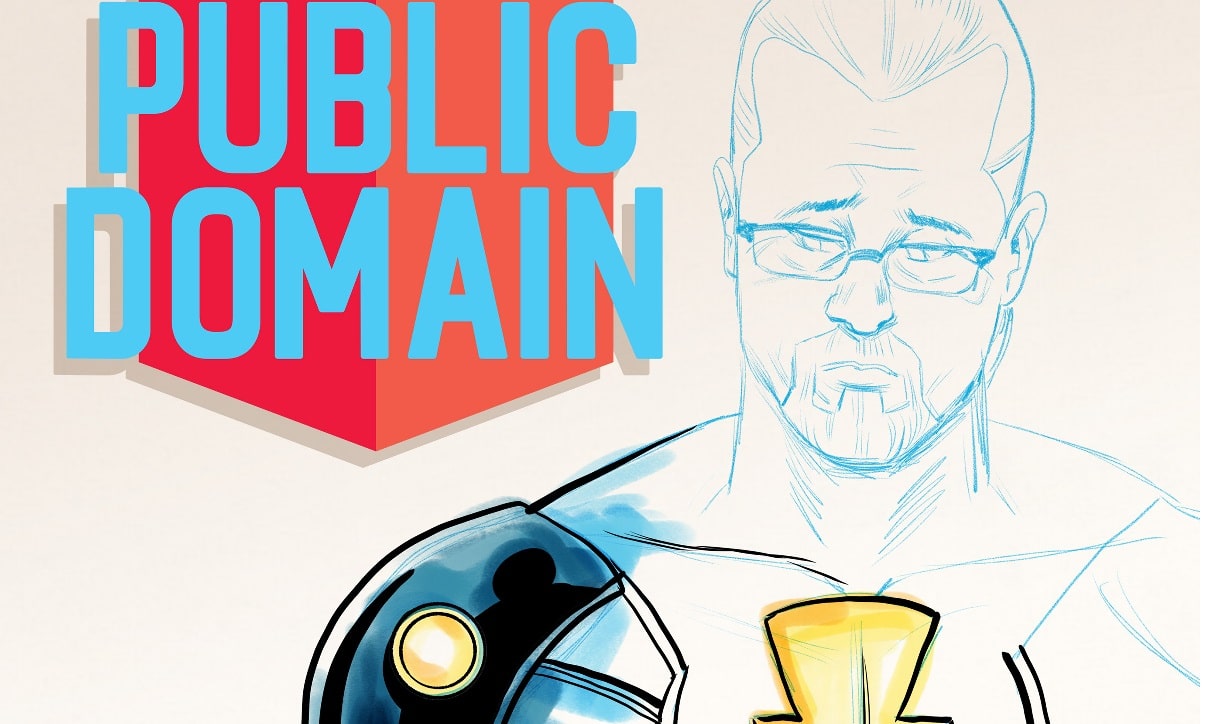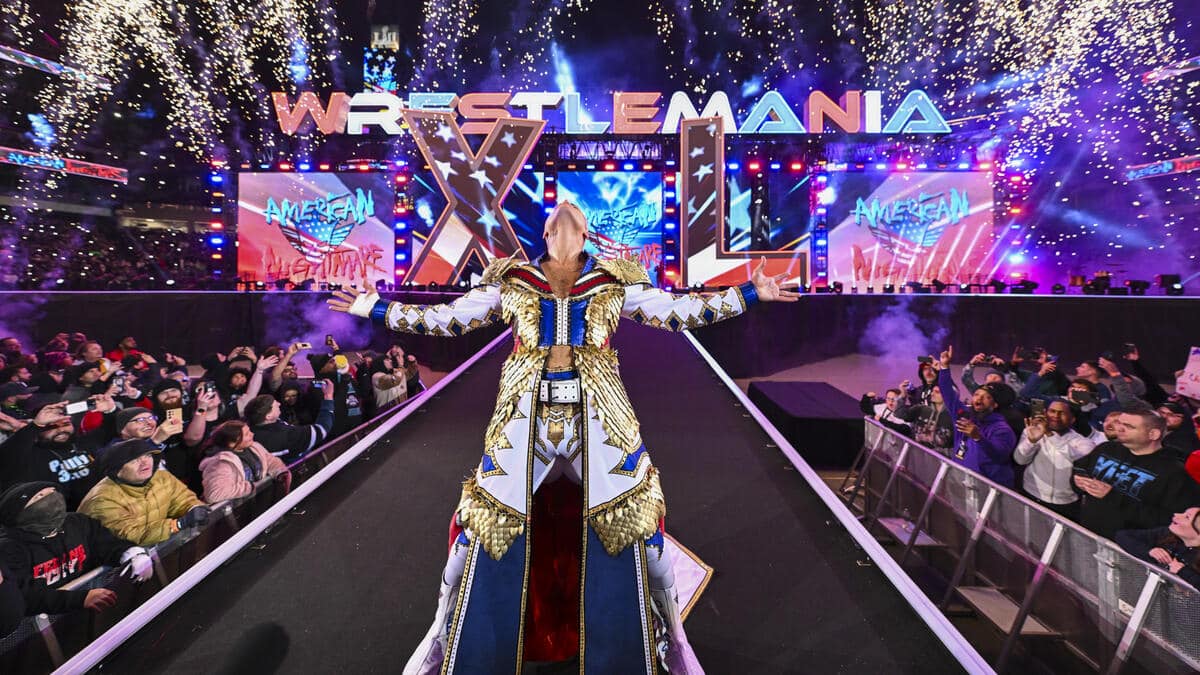by Ricardo Serrano Denis
Anthony Del Col wants readers to question his books. He doesn’t look for complacent readers, or readers that take the historical context of a book as absolute fact. Part of the reason is that fiction writing does not adhere to the rules of historical truth. It must, first and foremost, be successful in telling a compelling story. Bending truths and infusing them with conspiracy theories are fair game, and Del Col’s work offers a healthy dose of all of the above. Anthony Del Col wants readers to become researchers themselves after putting down his books.
Son of Hitler is a graphic novel that is intended for further discussion once the final page closes the story. It is based on combination of myth and a deep conspiracy theory that claims Hitler had a son. In the book, a small group of people are in on the possibility the conspiracy theory is true and are hoping to convince the dictator’s boy to enlist in a mission that asks that he infiltrate his father’s lair to assassinate Hitler and end the Second World War.
I sat down with Del Col at New York Comic Con to discuss his book and how mixing history and conspiracy allowed him to address the past, present fears and anxieties, and how it helped him tell a story that informed people on other aspects of World War II history.
Ricardo Serrano: Son of Hitler is an important book that clearly shows the amount of research that went into it. It made for a great and often scary read. Let’s start with inspiration, especially because when I was reading it, I could appreciate the juggling of history and conspiracy. Recognizing how hard that must be, how did you manage to make these two elements mesh so well?
Anthony Del Col: First of all, thank you for the praise. Son of Hitler is a book that I am really very proud of. I think there’s a very fascinating story there, and what was great about it was, to answer your question, it all started with the discovery of this legend that Hitler had fathered a child when he was in France during the First World War. Geoff Moore, who is the book’s co-creator, was the one brought it to my attention. Immediately we started to go back and forth and exchange a bunch of ideas and that sort of thing. And that got me very excited about it. And then I sat down, and when it comes to the plotting of stories a lot of it is straight-forward plot– the mix between adventure plot and conspiracy theory.
We meet Pierre Moreau, who is the feature’s son of Hitler. He’s in his mid-twenties and he was raised without any knowledge as to who his biological father was. Then he discovers the truth. A spy handler from England tells him about his father and how he’s mad and the most vicious man on the planet. So, I mean, from then it’s a straight-forward story about getting Pierre from France to Berlin so he can track down Hitler. And the original incarnation was that the story would end in the bunker, where we find out how Hitler actually dies. But then, and this is where more of the conspiracy you were probably referring to, last year or maybe about year and a half ago, I came up with this twist that would lead into this completely different third act and a completely different final 40 pages.
One of the things that spurned me was that over a year ago, in early August, 2017, the Charlottesville riots happened. And for the first time in my lifetime, I saw Nazis marching on the streets and they were proud of having neo-Nazi philosophies. And it just shocked me. It made me realize that we need to do more than just tell the world a World War II story. That’s when we sat down and kinda mapped out what would happen in this third act. So, without any spoilers, the bunker happens and then the story twists into a completely different direction.
All I’ll say is that the bunker is not the end of the Hitler family saga. That’s all I can say.
Serrano: It is a very interesting twist. As a history teacher myself, I’m planning to use the hell out of this book in all my classes. So I was wondering if, as a writer, there comes with this type of story a sort of worry or anxiety as to how readers or even students consume the information in your book. Do you trust your audience to say ‘this is real, this part I need to dig into a little bit more.’ How do you approach that question?
Del Col: Yeah, I mean, one of the things I always try to do, whether it’s with Kill Shakespeare, which was my first series with IDW, Son of Hitler, or even Assassin’s Creed, is mostly to serve firstly as entertainment. I want people to enjoy the process. You know, they’re reading it and they’re really enjoying it. Secondly, I hope to inspire and enlighten. When it comes to Shakespeare, hey, this is what Hamlet was like, this is what Richard III was like, this was what Lady Macbeth was like. For Son of Hitler, here are some espionage things from WWII, here’s a legend that actually permeated through certain camps. For Assassin’s Creed, this is what the Salem Witch Trials were like, this is what the last days of the Inca Peru were like.
And then [I want] to inspire them to, as you said, go ‘hey I really find this time period really interesting, what is exactly true? Let’s go do some more research on Hitler and know more about the horrible things he did.’ If I can spur students or readers or audiences into doing a little bit of legwork themselves, I’m kinda holding their hands a bit and saying ‘now you have this great treasure or this great garden of the internet, go forth and try to find out more information.’ You know, that’s the inspiration part.
Serrano: You’ve mentioned you’re involved with classes and educational programs. Are they tailored more as to how comics are integrated into classes or maybe something different?
Del Col: It’s a lot. I’ve done numerous talks at schools, high schools, elementary schools, and libraries to talk about all aspects of the comics-making process. So, whether it’s talking to students about Kill Shakespeare or Son of Hitler, we talk about the research behind it, the actual history– we talk about Shakespeare and who Shakespeare was and who these characters were– to what does it take to create a comic book. What does it take to make that comic book come to like to get them into the hands of readers and to audiences. So I cover all aspects of it and all different age ranges.
To me it’s about trying to get to that sort of inspiration, because whenever I teach a class, maybe 50% of the class is checked out. This is all levels. If 50% is checked out, maybe they don’t want to be there. You can tell they’re on their phones or whatever it is. Then there’s maybe about 25-30% either kind of into it, they’re drifting in and out, they might find it intriguing. And then there’s that 10-15% that, just, they’re riveted, they’re excited. So I like to tailor, whenever I do a class or a workshop, to those two final categories. You know that that 10-15% you can inspire because you know they’re going to get home and start to write something, or they’re going to start to draw something. That’s great. But also that other 25-30%–are the percentages working out? I can’t remember. I just try to see if I can slightly tip the scales in the direction of them wanting to learn more.
Serrano: As a teacher, I do see comics as an excellent medium for education. Given their visual nature, it kinda gets them hooked. At the same time, in the case of Son of Hitler, you produce a story that’s also very hard-hitting and pretty violent as well without ever being without its purpose and its methods. So, how did you approach that level of violence in the comic, knowing it has the potential to reach a very wide audience?
Del Col: Alright, so here’s the really interesting thing, and I learned this when I was working on Kill Shakespeare, when it comes to library and even some schools, violence is not such a huge thing. It’s weird, because in Kill Shakespeare you have tongues getting cut off and heads getting chopped off, limbs getting torn off, all kinds of wild and over-the-top violence, but it’s violence taken straight out of Shakespeare. Libraries are okay with that. But when it comes to any sort of nudity or sexuality, that’s the no. I mean, the only change we ever made or that I ever made for Kill Shakespeare was I had to reduce the amount of ‘side-boob’ in one image. That’s it. The rest of it, all the aforementioned violence, was totally fine.
With Son of Hitler, I leaned in a little less to make sure that it get into every single library because I wanted to reach the truth of what was happening in that time period. You know, I wanted to be audacious and over-the-top in some points just because WWII was over-the-top and vicious in a lot of parts. So in Son of Hitler, there is no sexuality or anything like that. There is nudity, but it’s nudity that is there for a purpose. Hopefully it doesn’t get teachers and libraries to shy away from it because I think there’s a very important message, not only about what WWII was like, but also about some of the things that formed the foundations of why things like Charlottesville last year happened. And I think it’s important to talk about that. If that means we have to show some of the violence to really capture the attention of readers, then so be it.
Serrano: I think the violence itself helps move the story forward in the sense that it is purposeful. It’s not just there gratuitously, you know. At the same time, the comic does seem very topical, timely. It’s definitely resonating with what’s happening now. Would you say the comic has an element of activism as well?
Del Col: Um, it’s probably the most activist…’activistic’ or whatever the term is. I’ll say activistic. I’m coining the term. It’s more activistic than anything I’ve done before. Like I said, when I woke up the morning after Charlottesville and saw the footage of what happened, I got chills. That is the kind of stuff you should never see in your life, especially after what happened in WWII. For people to have these sorts of policies, it’s been a lot of things that have disturbed me in the last couple of years, not only in North America but also in Europe. And so I think it’s important to tell this sort of story. There this sort of analysis of what’s going on today in that final act [of the book]. There is a quote from a very significant politician, a paraphrasing of a quote in there. There’s a character that is named after, but not representative of, someone who plays a big role in North American politics and there’s a reason for that. And yet, some people, maybe wrong, some of these staunch republicans, might not like this kind of message, but, I’m sorry, some of their policies are very similar to what happened in World War II.
Serrano: Well, it’s definitely a comic I think we more of now. It’s something I definitely think challenges students and readers alike. And I hope it’s something that continues to be discussed, especially through your book. I want to thank you for the conversation and for writing Son of Hitler.
Del Col: Thank you! Son of Hitler is very close to my heart. It’s my first project with Image Comics, and I’ve always wanted to work with them. The team there has been great. Like I said, it’s been my most activistic book. Activistic?
Serrano: It’s a word.
Del Col: It’s a word. Coining the term. I’ve had more to say with this book than I’ve had in other projects.
Son of Hitler is out now.


